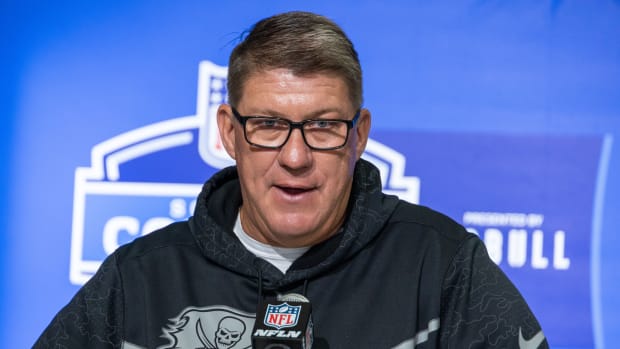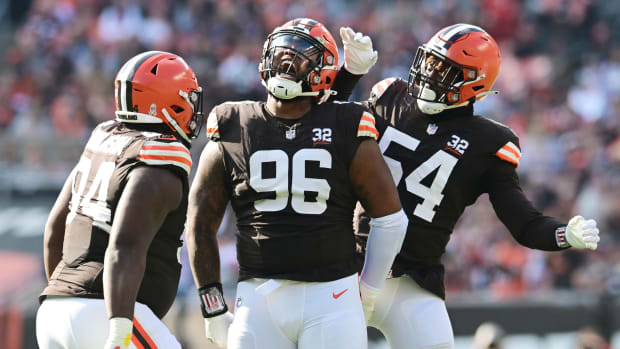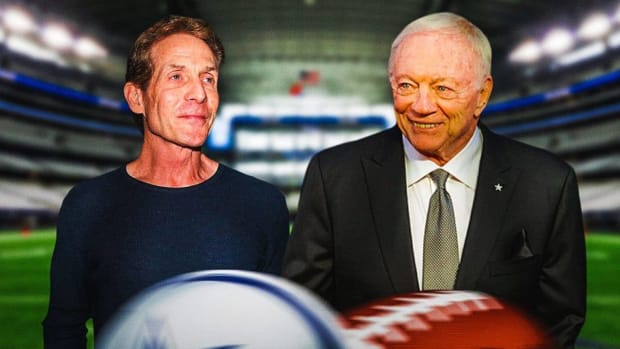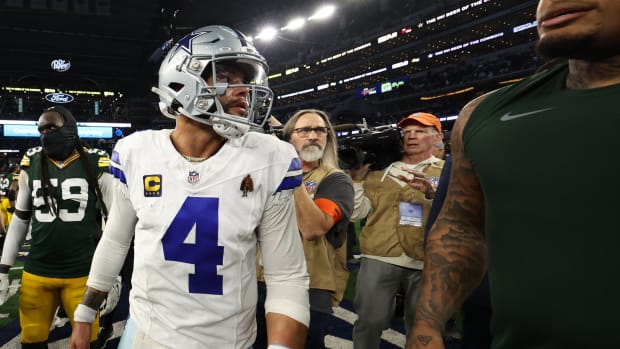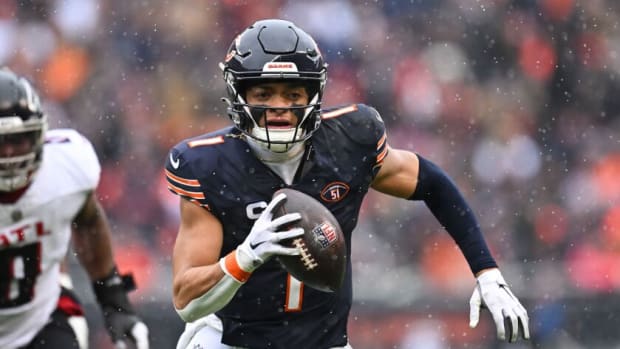The Best and Worst O-Lines
Offensive line play is like wood craftsmanship: many can tell when it’s good or bad, but they don’t actually know why it’s that way. And that’s completely understandable. Television cameras don’t capture the offensive line’s spacing, and with at least five large-bodied players confined to the middle of the field, everything they do comes down to nuanced techniques. Unless you spend a week in a film room learning the guard/tackle/center positions from an expert who played or coached the game, there’s no way to grasp the intricacies of the trenches.
Not surprisingly, there are many misconceptions about O-line play. Analysis of it is often reduced to how many sacks the offense allowed or how many rushing yards it accumulated. The myriad variables that go into creating these numbers—things such as the receivers’ route running, a quarterback’s pocket movement and the defensive fronts—are often ignored. And did a back or tight end stay in to block? When those guys get beat, it's wrongly counted against the offensive line.
• THE FINE FIFTEEN: Jenny Vrentas’s Week 13 Power Rankings
The point is that there’s always way more to O-line play than what appears on the surface.
Except with the Cowboys.
They’re so good up front they make many of the general assumptions about quality line play true. Five giant athletes line up and are simply better than their opponent. They create gaping rushing lanes for Ezekiel Elliott and significant time in the pocket for Dak Prescott. It’s why Elliott, who is supremely gifted in quickness and short-area strength, can look unstoppable. And it’s why Prescott can endure many of the common glitches you see from rookie QBs (such as promptly identifying some of his later progressions) but still have the NFL’s fourth-best passer rating (108.7).
With the blockers almost never needing help, Prescott often has all five eligible receivers available. More options mean more chances at finding an open receiver. And good options become easier to create because with three receivers to one side and two to the other, the Cowboys can employ route combinations that find holes in almost all basic coverages. On one side of the field Prescott might have routes designed specifically to beat man-to-man or single-high safety coverage. On the other side he might have routes that are designed to beat zone or two-high safety coverage.
Every offense has these features, but not every offense has the Cowboys’ level of pass protection, which makes all of those options so readily available. The Cowboys can afford the luxury of having a basic, execution-based passing attack, which is amplified by having the right kind of receiver at every spot. Dez Bryant is a true No. 1 on the weak side. Terrance Williams is a fairly speedy No. 2. Cole Beasley is a quick, shifty slot weapon. Jason Witten is a classic possession tight end. And Elliott is very good on check-downs outside. You could argue that no quarterback in recent history has had better conditions or better supporting talent than Prescott has right now. The O-line is what allows it all to work.
Everything you’ve heard about Dallas’s O-line is true. Unfortunately for Vikings fans, so is everything you’ve heard about Minnesota’s. A mediocre group to begin with, injuries have rendered it the worst in the NFL. And while having the best offensive line has simplified things for the Cowboys, having the worst has naturally complicated things for the Vikings, who will host Dallas on Thursday night.
Since starting right tackle Andre Smith joined left tackle Matt Kalil on injured reserve, the Vikings, who were undefeated at the time, have gone 1-5. With T.J. Clemmings and Jeremiah Sirles taking the bulk of the tackle snaps since then, Minnesota’s offensive scoring has dropped from 18.6 points a game to 14.5, and their yards per pass attempt have fallen from 7.0 to 5.4. Offensive coordinator Norv Turner, whose system is admired but not conducive to camouflaging bad pass blocking, resigned. Pat Shurmur has taken over and narrowed the scheme to a collection of screen passes, Wildcat plays, short misdirection concepts and, when Shurmur feels especially daring, rollouts or seven-man protection calls. Gimmicks and gadgets, in other words. These present the illusion of a complex offense when, in fact, the Vikings are a very remedial one.
It’s times like these when a team gets back to basics in the running game. But the Vikings are hamstrung here as well. The Cowboys can run to anywhere on the field, thanks to athletic linemen who stretch to the perimeter and make blocks on the fly. The Vikings, on the other hand, have an almost exclusively north/south running game. Interior blockers double-team at the point of attack and one of those blockers works off that double and up to the linebacker. The Vikings are averaging a near record low 2.84 yards a carry largely because this approach, from a tactical standpoint, is easy to defend.
Which brings us to the great irony: Just like the Cowboys, the Vikings have become a schematically simple offense, except for vastly different reasons.
• Question? Comment? Story idea? Let us know at talkback@themmqb.com

































